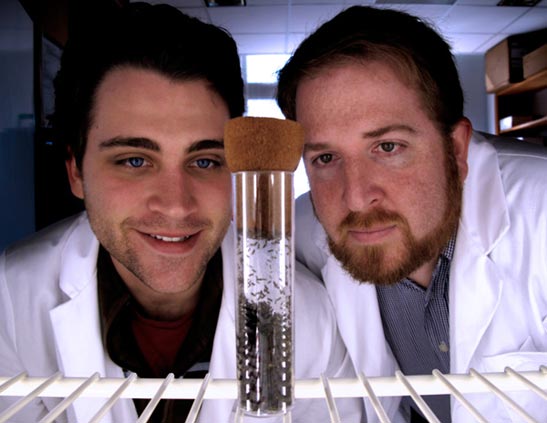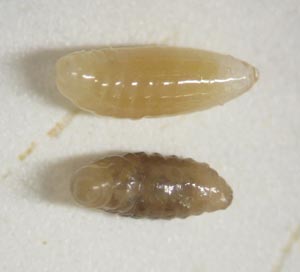
Literature tells us that “no man is an island entire unto itself,” but science reveals that we are in fact a walking, talking colony of microscopic creatures.
Every plant and animal species carries its own set of bacterial fellow travelers. Since the early 20th century, scientists have argued what role these colonies play in promoting or inhibiting the formation of new species.

A team of Vanderbilt biologists is attempting to answer this long-standing question thanks to a $1.3 million award from the National Science Foundation. In order to do so, the team will use a tiny species of wasp, called Nasonia. The species carries bacteria that have demonstrated the ability to influence their host’s sexual behavior.
“By receiving this award,” said Assistant Professor of Biological Sciences Seth Bordenstein, “we have been challenged by the National Science Foundation to answer one of life’s most fundamental questions.”
Each of us carries thousands of different species of microbes, what scientists refer to as the human microbiome. In fact, only one out of every 10 cells in our bodies is human while the other nine are bacterial.
Although these bacterial cells, known as commensal bacteria, greatly outnumber our own, these fellow travelers go largely unnoticed because they are much smaller than human cells.
Bacteria inhabit the gut, skin and mucous membranes, where they perform a number of crucial functions such as aiding digestion and strengthening our immune systems.
Two opposing theories
There are two opposing theories for the role that commensal bacteria have played in furthering environmental diversity, the process that has filled the planet with more than 1.8 million different species. One says that they don’t play any role. Instead, speciation is driven exclusively by the host’s genes. The other theory holds that the bacteria are in the driver’s seat, encouraging the formation of new species when they stand to benefit and discouraging formation when they do not.

Bordenstein and his team are looking for evidence to support the second contention by studying the characteristics of the microbiomes of several closely related species of Nasonia and the hybrids produced when they mate. By analyzing the genomes and microbial communities of this wasp species, which recently underwent the process of speciation, graduate student Robert Brucker and his colleagues in the Bordenstein lab are attempting to identify specific microbes that increase the rate of mortality in the hybrid offspring.
Specifically, the team will identify the host bacteria that colonize the different hybrids; assess the hybrids’ ability to regulate their own immune systems and defend against certain pathogens; and determine whether any increased lethality is due to decreases in the numbers of beneficial bacteria or to increases in the numbers of pathogenic bacteria.
Eventually, Bordenstein and his team hope that these observations will provide new insights into the role that host bacteria play in this vital evolutionary process.
This story was written by communication of science and technology major Peter Letarte.